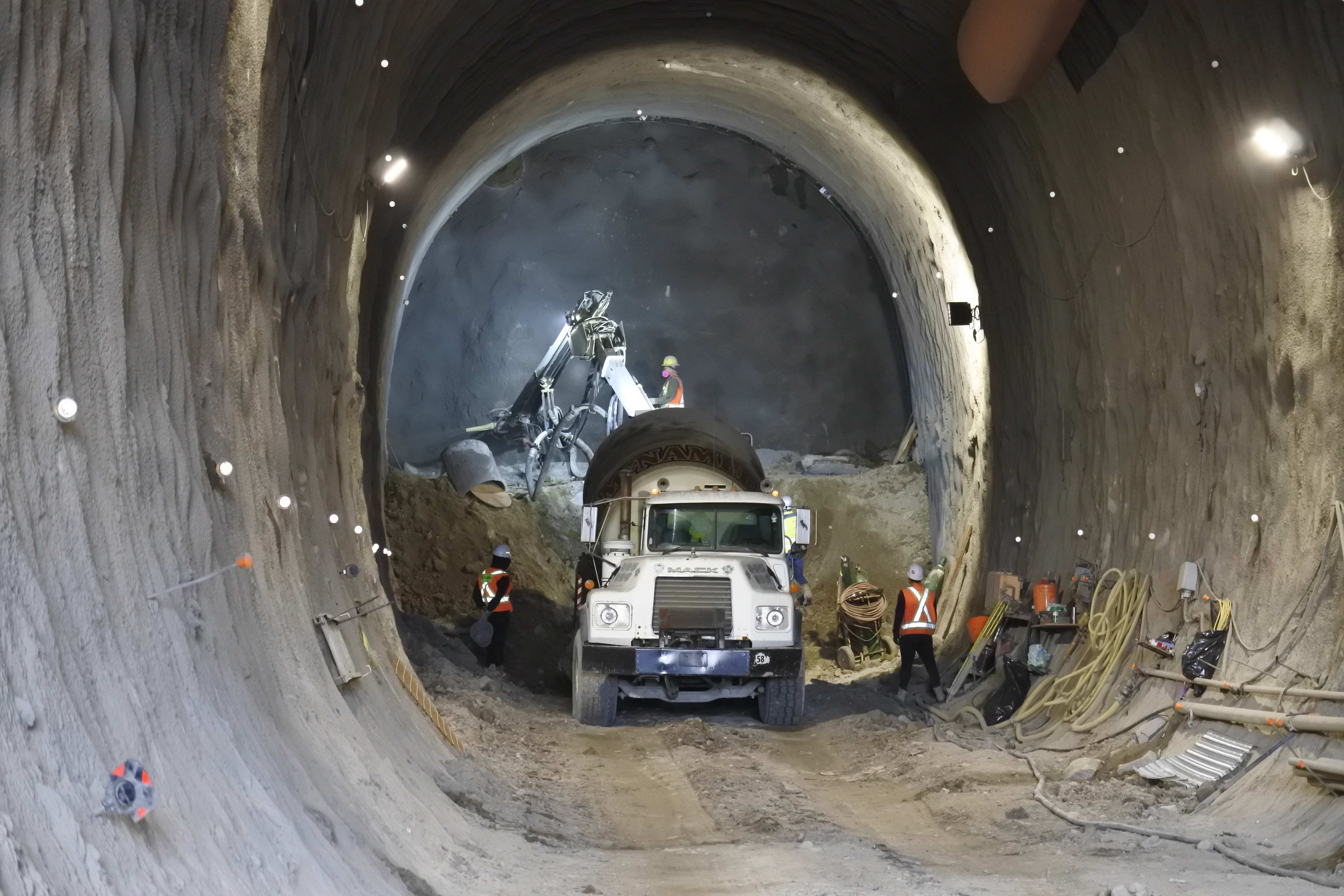Highway 401 and 409 Rail Tunnel Projects reach halfway mark
Check out the progress as crews tunnel below Highway 401 and 409 in the name of transit.
Jun 29, 2020
It takes approximately three minutes to walk 180 metres, and it’s not something people tend to think about. Throw in having to go through solid ground, dirt and debris and now it’s a challenge.
Crews have surpassed 50 per cent of Tunnel One excavation and are now tunneling under the westbound lanes of Highway 401, along a major rail route, where that expressway meets Highway 409.
Excavation of the upper section in Tunnel Two is also underway and progressing well at 10 per cent completion.
East portal: Tunnel One has surpassed the 50 per cent excavation mark. Shotcrete is applied using robotic technology fed by a cement truck. (Metrolinx photo).
The Highway 401 and 409 Rail Tunnels Project is part of the GO Rail Expansion program, which will transform the Kitchener line from a rush hour commuter service to a rapid transit experience.
When complete, the length of each rail tunnel under Highway 401 and 409 will be approximately 180 metres, or about 360 metres when combined.
The new tunnels are being constructed using the Sequential Excavation Method (SEM), a way of tunnelling that splits the excavation into segments. This approach empties the tunnel in bite size amounts. The upper portion of the tunnel is considered one segment and the lower section of the tunnel is another segment.
The crew applies shotcrete between segments, which is concrete that is sprayed onto the inner surface of the tunnel to provide reinforcement and strength to retain its shape.
Crews have already sprayed approximately 3,400 m3 of shotcrete. A concrete truck shuttles concrete to a robotic shotcrete machine to manage this fundamental layer of work. The technology provides the proper pressure to set the concrete in place.
Excavating 110 metres amounted to 1,650 m3 of material, filling 165 dump trucks at Tunnel One. Tunnel Two had its fair share of excavation with enough material to fill 39 truckloads and counting.
Trucks haul away dirt from the site. (Metrolinx photo)
At the west portal, crews have completed installation of the pre-support pipes installed with an auger boring machine. The pipe and bore process involved horizontal jacking, pushing pipes directly above the future tunnel acting as a ‘support roof’. The auger removes the earth that collects in the long pipes during drilling.
The 813 mm diameter steel pipes form a canopy to support the structure of the tunnel. Auger boring began in summer 2019 and is now complete.
A look at the west portal of the tunnel, and completion of the auger boring. (Metrolinx photo)
The new tunnels will provide space for two additional tracks in the future, bringing communities two-way, all-day train service on the Kitchener GO corridor.
For more information or sign up for e-newsletter updates by emailing TorontoWest@metrolinx.com.
To find a past story on this project, just click here.
Want to see other transit related progress Metrolinx is spearheading? Then check out this special page.
by Teresa Ko Metrolinx communications senior advisor
